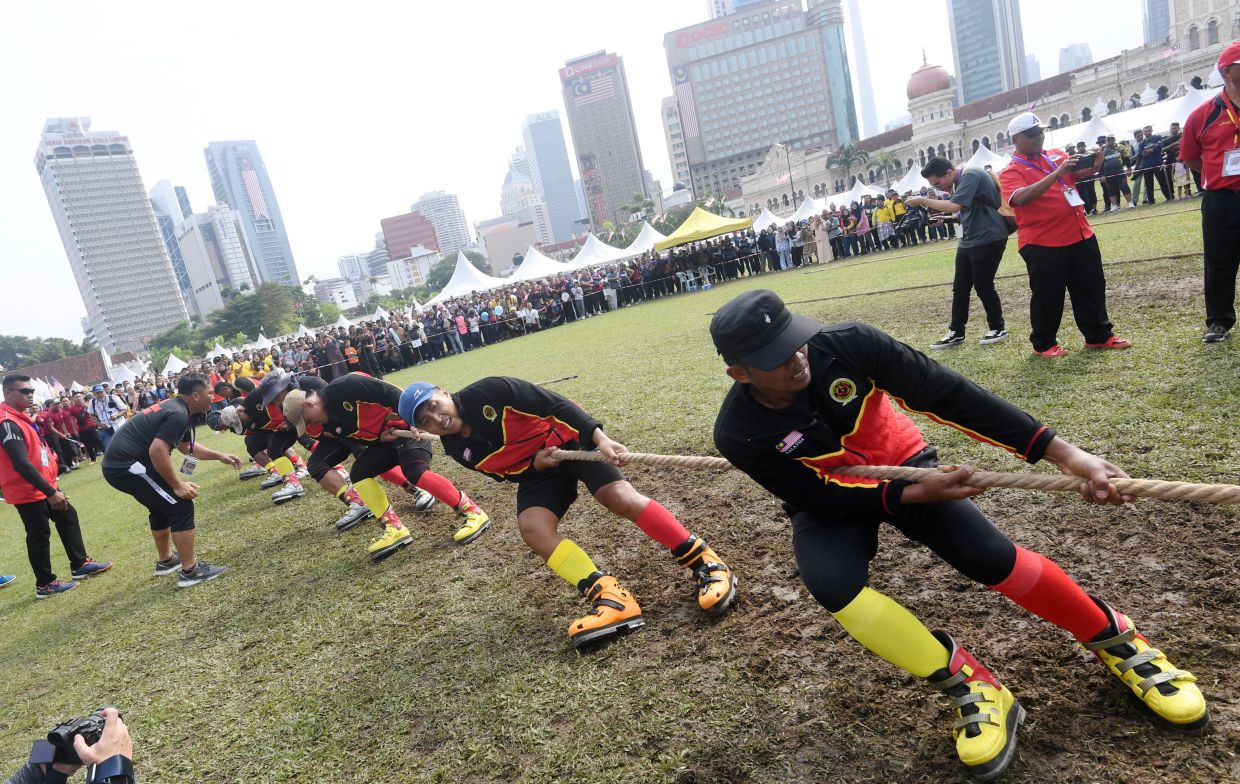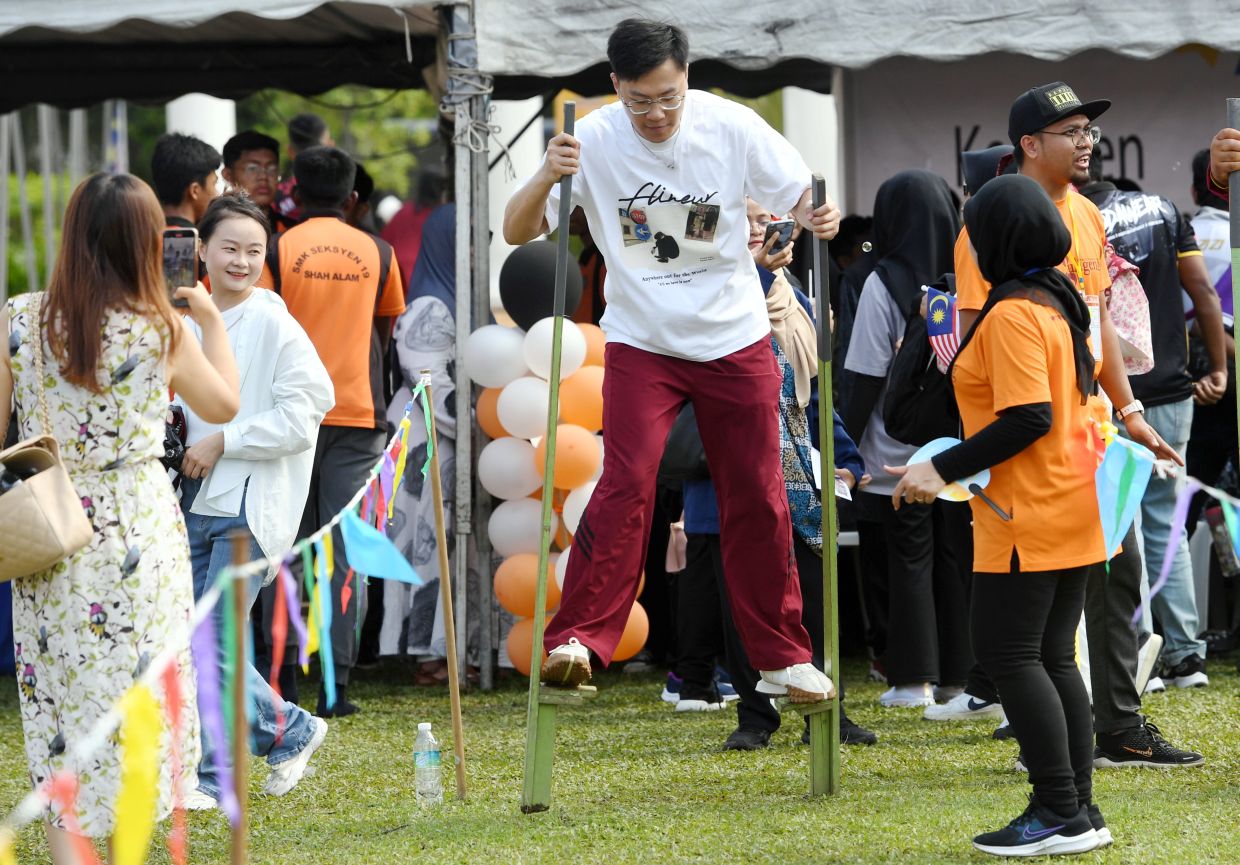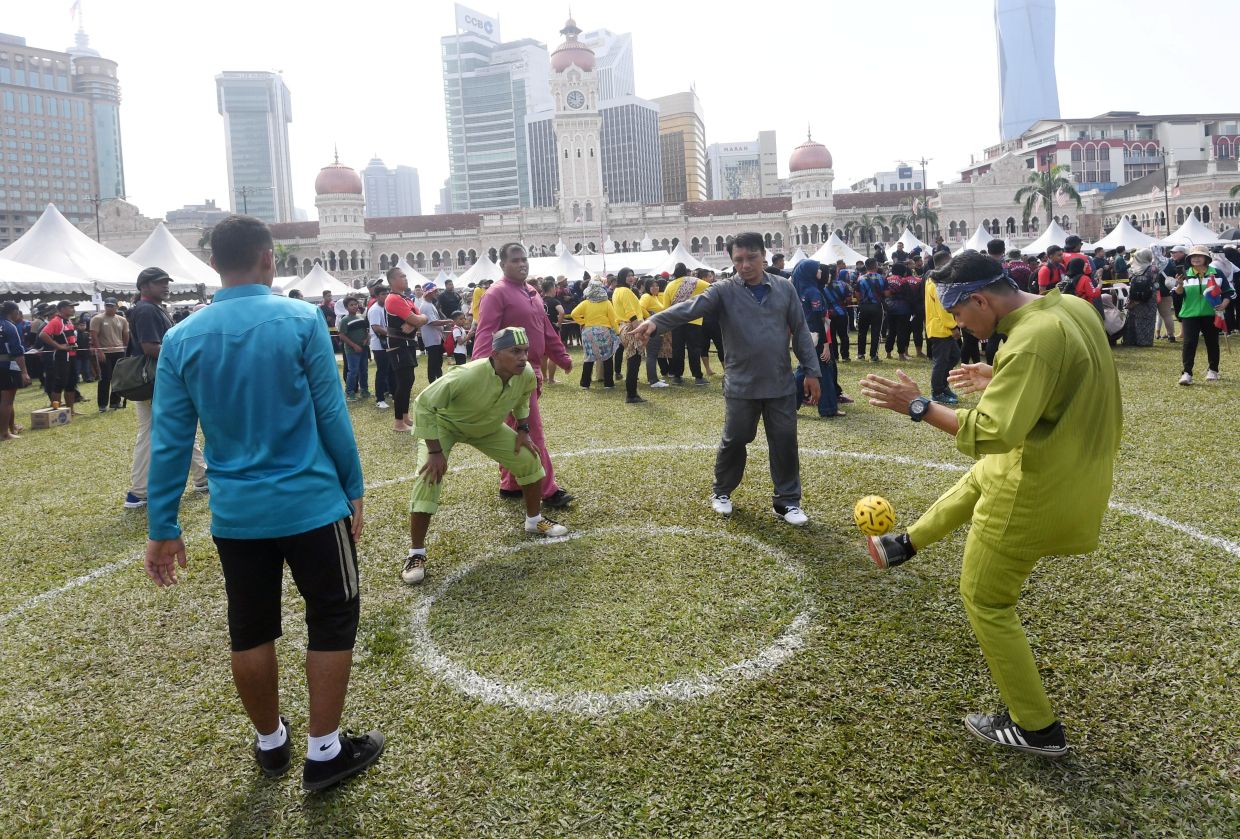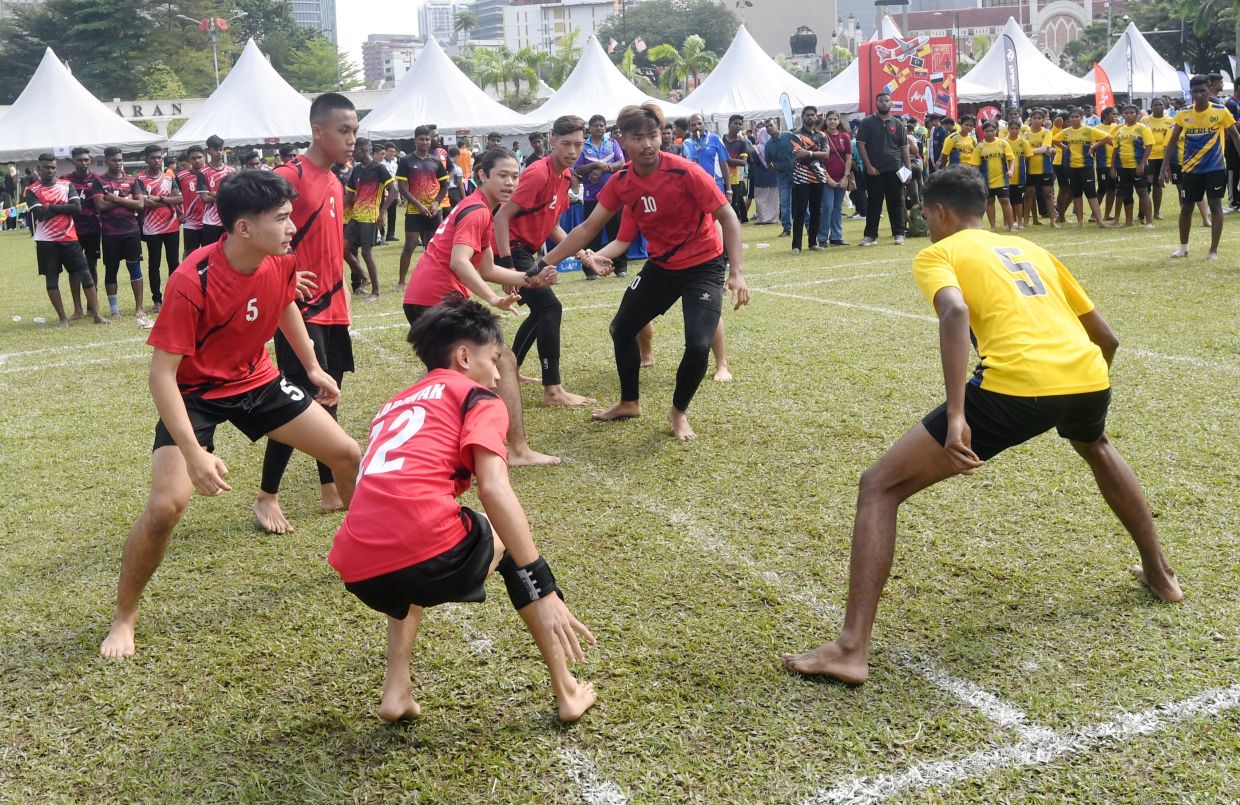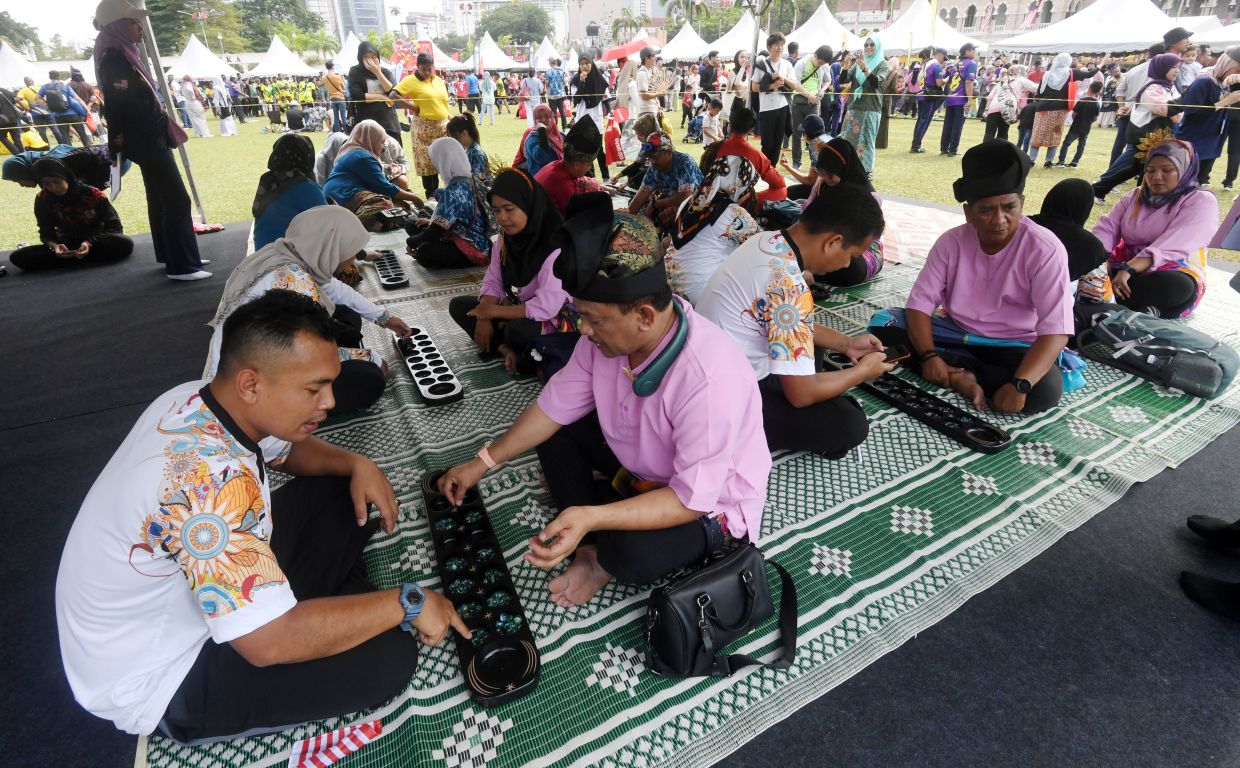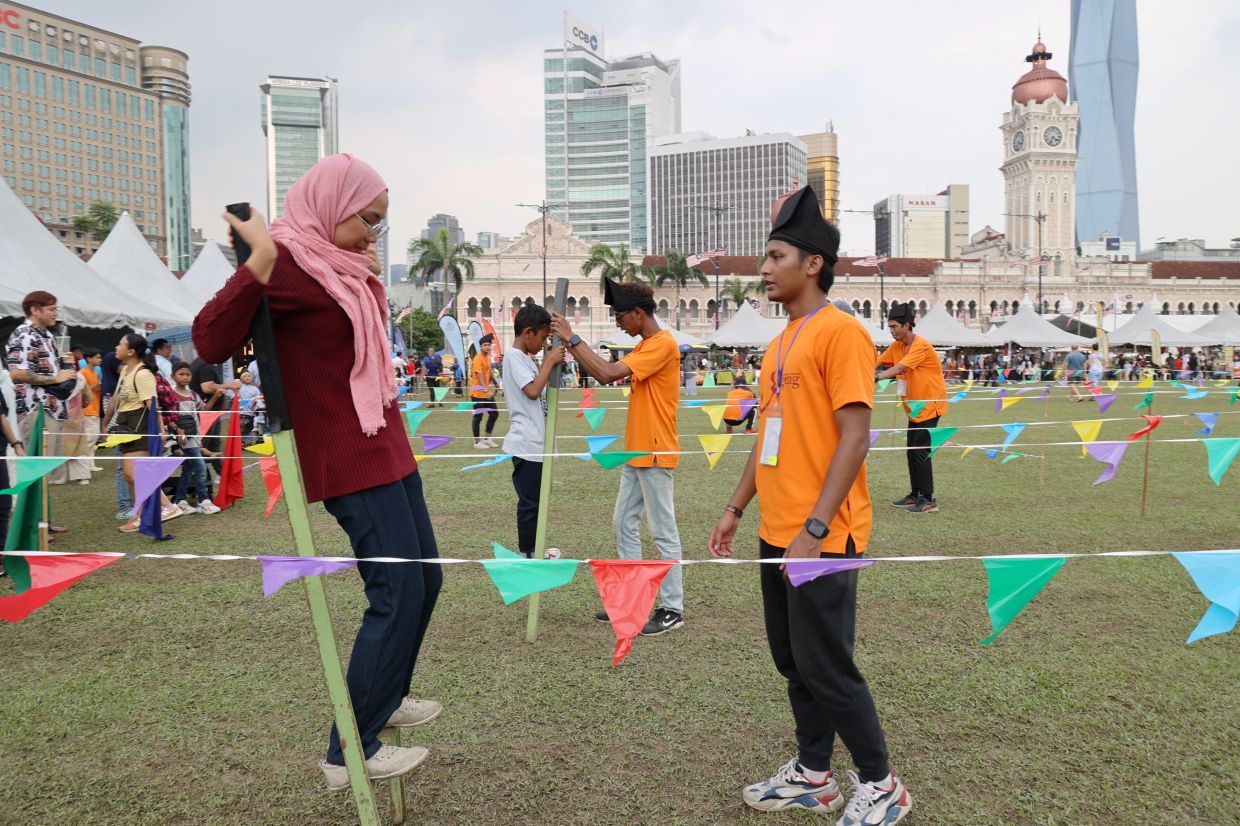For kids and kids at heart: Visitors trying out the tarian magunatip, which is Sabah’s traditional bamboo dance, at this year’s Malaysian Games Festival. — Photos: ART CHEN/AZHAR MAHFOF/The Star/Agencies
This Malaysia Day weekend, head on out to Dataran Merdeka to learn more about our traditional games, especially those from Sabah and Sarawak.
MALAYSIANS who play together, stay together. Or so we hope.
Either way, they are definitely guaranteed to have fun playing the traditional games at the Festival Permainan Malaysia (Malaysian Games Festival) at Dataran Merdeka, Kuala Lumpur, on Sunday, Sept 17.
Organised by the National Department of Culture and Arts Kuala Lumpur, the annual three-day festival, which started on Friday and ends on Sunday, showcases the uniqueness of Malaysia’s traditional games.
And to foster greater understanding of Sabah and Sarawak cultural heritage this Malaysia Day weekend, the traditional games of the diverse tribes in the two Bornean states are also being featured at the festival.
Here are some of the traditional games that visitors can learn about, and play, at the festival:
Rampanau
Rampanau is a popular folk game among the Dusun community especially in the Tambunan, Keningau and Ranau districts of Sabah.
Also known as Minsurukud in some districts, rampanau is a balancing game that involves walking, running or racing on stilts made of sago palm tree branches, hard wood and two pieces of bamboo measuring about 3m up to 10m.
This fun tradition also served a practical purpose in the old days – the stilts can be used to cross rivers, canals or walk through muddy fields.
Today, however, rampanau is played during the Kaamatan festival or showcased at cultural events.
Mintubow
Mintubow is a traditional top-spinning game of the Bidayuh and Malay communities of Sarawak. It is normally played after the padi harvesting season.
The mintubow’s top is usually made of wood from rainforest trees like merbau or bebaru and even fruit trees like durian and kemuning.
To spin the top, a 1m nylon rope is used. The top that spins the longest wins the game.
Kercang
Kercang is a traditional puzzle game of the Orang Asli. Made of rattan, kercang is wound layer by layer according to its level of difficulty. The kercang has a string in the middle of the layers. The objective of the educational game is to “free” the string from the kercang.
It is said that the game was popular among the Orang Asli and Malays who lived in and around the Endau Rompin forest in Pahang once upon a time.
The kercang symbolises a forest with ravines, ridges and other jungle elements or land forms that create obstacles for the string, which can be likened to a lost traveller that needs to find the way out of the forest. The first player to successfully free the string trapped in the middle of the kercang layers is the winner.
Kelereng
Kelereng is a traditional marble game where the players need to flick their rivals’ marbles. Kelereng is usually played on a flat surface. Historians believe marbles originated from the ancient Egyptian and Roman era. In the past they were made from stone and mud. Today, marbles are made of soda lime, silica, scrap glass and other materials for colour.
Terompah gergasi
Terompah gergasi, or giant wooden slippers, is a traditional race played in teams. Also known as millipede’s feet (kaki lipan), terompah gergasi requires players to wear one “slipper” while holding on to each other’s waists and walking in tandem without falling. The first team to cross the finish line wins.
Terompah is one of the traditional games tagged the “Legend Games”, which include susun bata (brick laying), kaki hantu (ghost feet), kereta sorong (wheelbarrow), lari dalam guni berkembar (twin sack race), tarik upih pinang (areca nut leaf ride) and raja dijulang (exalting the king).
Dam aji
Dam aji is a traditional checkers game played in coffee shops and at home in the villages. It is an example of a traditional indoor game known as “permainan anjung” (games played on the anjung, which is the porch or veranda of a traditional Malay house).
In the past, checkers boards were not used. Villagers would draw squares on pieces of paper to make a board and use bottle tops, shells, leather pieces or small pieces of bricks as the pieces. Each player will need 12 dam pieces.
Other permainan anjung include batu seremban and congkak.
Kabaddi
Kabaddi is a traditional South Asian sport which means “catch the hand”. It is almost similar to the Malaysian traditional game of galah panjang. Played by two teams, kabaddi requires one team to be the “attackers” and the other the “defenders”.
When attacking, the offensive team sends across a “raider” into the opposition’s half who must touch one of more members of the opposition to put them out and score a point. When defending, the objective is to capture the raider by wrestling them to the ground or simply by preventing them returning to their own half before time is up to score a point. The team with the most points wins.
Kabaddi gets its name from the raiders who have to shout out “kabaddi” when they attack.
Sunday, Sept 17, is the final day to catch or play these traditional games.
You can also watch or participate in various contests such as the yoyo and diablo competitions at the festival.
If cultural performances are more your thing, check out the Wayang Kulit Run (Larian Wayang Kulit) that will kick off Sunday’s festival from 7am to 9am. Other performances scheduled are Sabah’s tarian magunatip (bamboo dance), the traditional blowpipe of Sarawak, Penang’s Chingay and silat. Various heritage food and local handicrafts will also be showcased for visitors to sample and buy as souvenirs. – Sources: Department of Culture and Arts, Bernama, agencies.
For more details, check out the Department of Culture and Arts website at jkkn.gov.my or visit its Facebook page at facebook.com/mysenibudaya. Visitors are advised to take the LRT or MRT to get to Dataran Merdeka.













